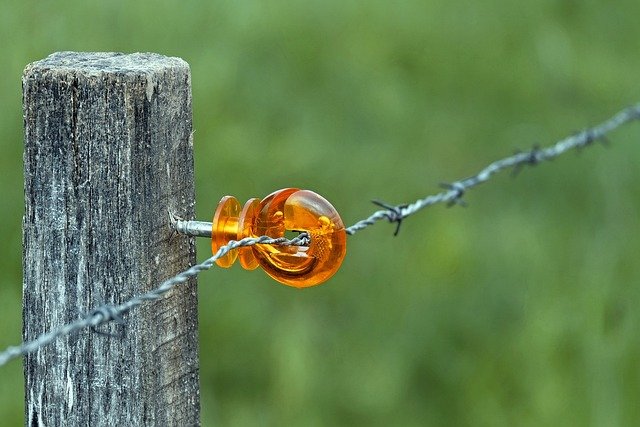Essential Insights into Farm Fence Expenses
Farm fencing is a crucial investment for agricultural property owners, serving multiple purposes from livestock containment to property demarcation. Understanding the costs associated with farm fencing is essential for budgeting and planning. This article delves into the various factors that influence farm fence expenses, helping you make informed decisions for your agricultural needs.

What factors influence farm fence costs?
The cost of farm fencing can vary significantly based on several key factors. Material choice is a primary consideration, with options ranging from traditional wood to modern wire fencing solutions. The length and height of the fence also play a crucial role in determining the overall expense. Additionally, terrain complexity, such as hilly or rocky landscapes, can increase installation costs due to the additional labor and equipment required.
Another important factor is the intended purpose of the fence. Fences designed for containing large livestock like cattle may require sturdier materials and construction compared to those used for smaller animals or simple property boundaries. Furthermore, the durability and longevity of the chosen fencing material can impact long-term costs, as more durable options may have a higher upfront cost but require less maintenance over time.
How do different farm fence materials compare in cost?
Farm fence materials vary widely in price and suitability for different purposes. Wire fencing, such as barbed wire or woven wire, is often one of the more cost-effective options for large areas. However, it may not be suitable for all types of livestock or provide the aesthetic appeal some property owners desire.
Wooden fencing, while more expensive, offers a traditional look and can be ideal for smaller areas or decorative purposes. Steel and aluminum fencing provide durability and low maintenance but come at a higher initial cost. Electric fencing is another option that can be cost-effective for temporary or rotational grazing systems but requires ongoing maintenance and power supply considerations.
What are the typical costs for farm fence installation?
Farm fence installation costs can vary significantly based on the factors mentioned earlier. However, to provide a general idea of expenses, here’s a breakdown of estimated costs for different fencing types:
| Fence Type | Material Cost (per linear foot) | Installation Cost (per linear foot) | Total Estimated Cost (per linear foot) |
|---|---|---|---|
| Barbed Wire | $0.50 - $2.00 | $1.50 - $3.00 | $2.00 - $5.00 |
| Woven Wire | $1.00 - $3.00 | $2.00 - $4.00 | $3.00 - $7.00 |
| Wood Post and Rail | $3.00 - $6.00 | $4.00 - $8.00 | $7.00 - $14.00 |
| Electric | $0.10 - $0.25 (wire only) | $1.00 - $2.00 | $1.10 - $2.25 |
| Steel or Aluminum | $7.00 - $12.00 | $5.00 - $10.00 | $12.00 - $22.00 |
Prices, rates, or cost estimates mentioned in this article are based on the latest available information but may change over time. Independent research is advised before making financial decisions.
It’s important to note that these figures are estimates and can vary based on location, specific project requirements, and market conditions. For accurate pricing, it’s best to consult with local farm fence suppliers and installers.
How can I find reliable farm fence suppliers?
Finding reliable farm fence suppliers is crucial for ensuring quality materials and competitive pricing. Start by researching local agricultural supply stores and fencing specialists in your area. Many of these businesses have extensive experience with farm fencing and can offer valuable advice on material selection and installation.
Online directories and agricultural forums can also be helpful resources for finding reputable suppliers. Look for suppliers with positive customer reviews and a history of serving the agricultural community. Additionally, attending local agricultural fairs or expos can provide opportunities to meet suppliers and compare products in person.
What should I consider for DIY farm fence installation?
For those considering a DIY approach to farm fence installation, there are several factors to keep in mind. First, assess your skill level and the complexity of the project. Simple wire fencing may be manageable for experienced DIYers, while more complex systems might require professional expertise.
Consider the tools and equipment needed for the job. Fence post drivers, wire stretchers, and other specialized tools may be necessary depending on the type of fence you’re installing. Factor in the cost of purchasing or renting this equipment when budgeting for your project.
Time is another crucial consideration. DIY installation can be time-consuming, especially for large properties. Weigh the time investment against the potential cost savings of professional installation. Additionally, ensure you’re aware of any local regulations or permits required for fence installation on your property.
In conclusion, understanding farm fence expenses involves considering various factors such as material costs, installation requirements, and long-term maintenance. By carefully evaluating these aspects and exploring different options, you can make an informed decision that balances cost-effectiveness with the specific needs of your agricultural property. Whether opting for professional installation or a DIY approach, thorough planning and research are key to achieving a successful and cost-efficient farm fencing solution.




